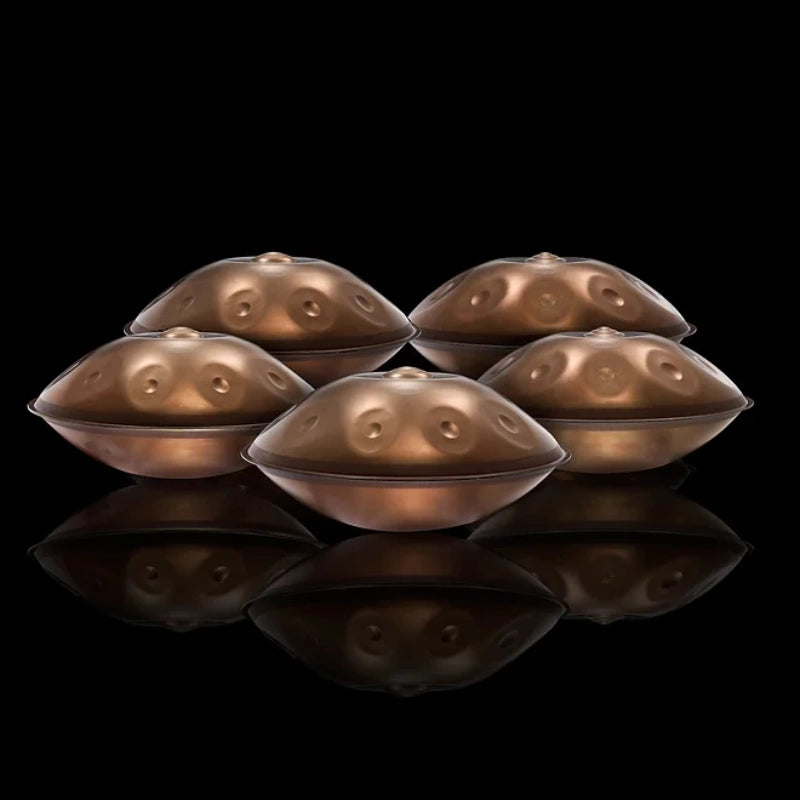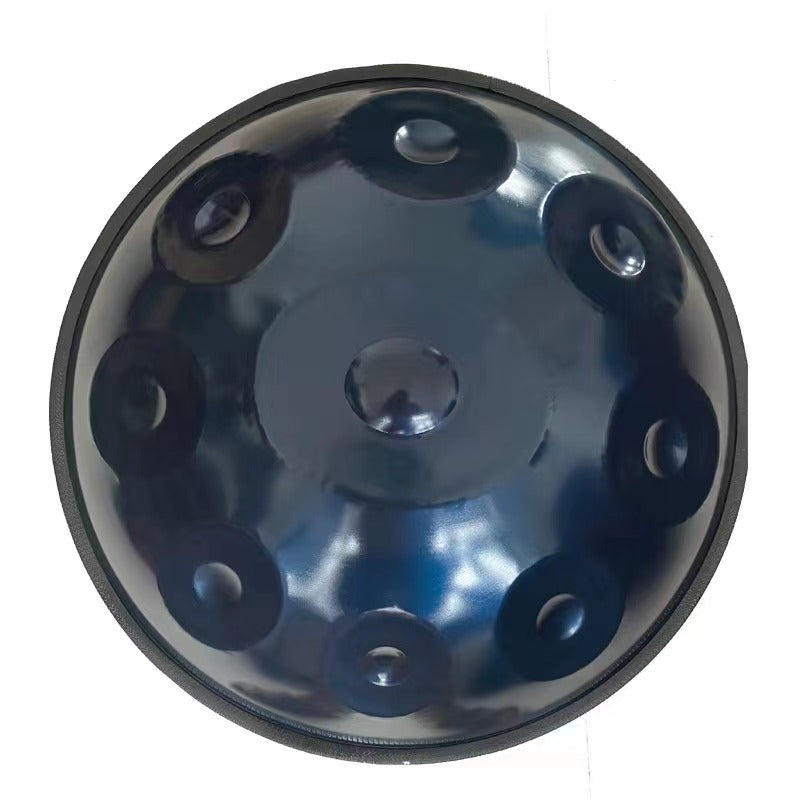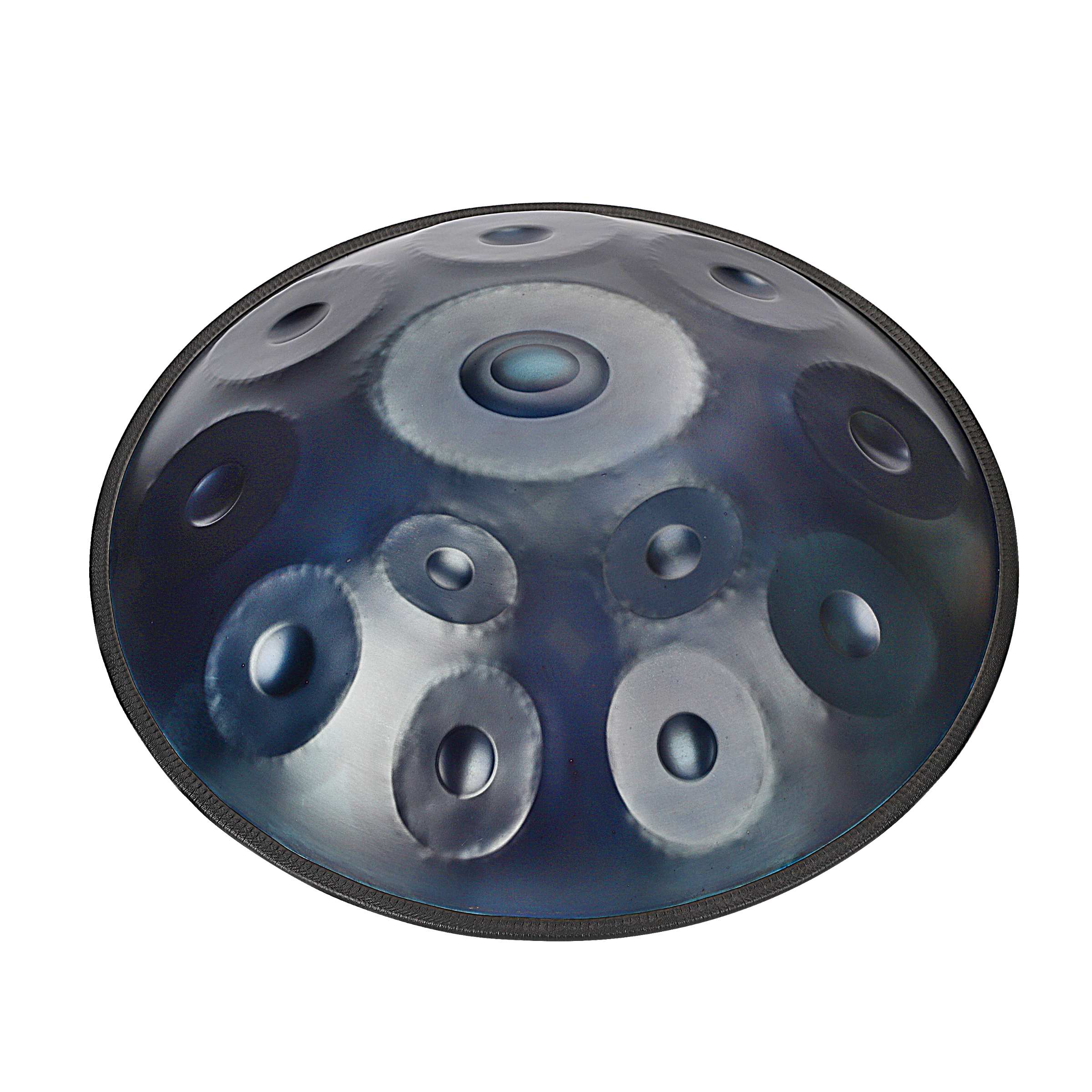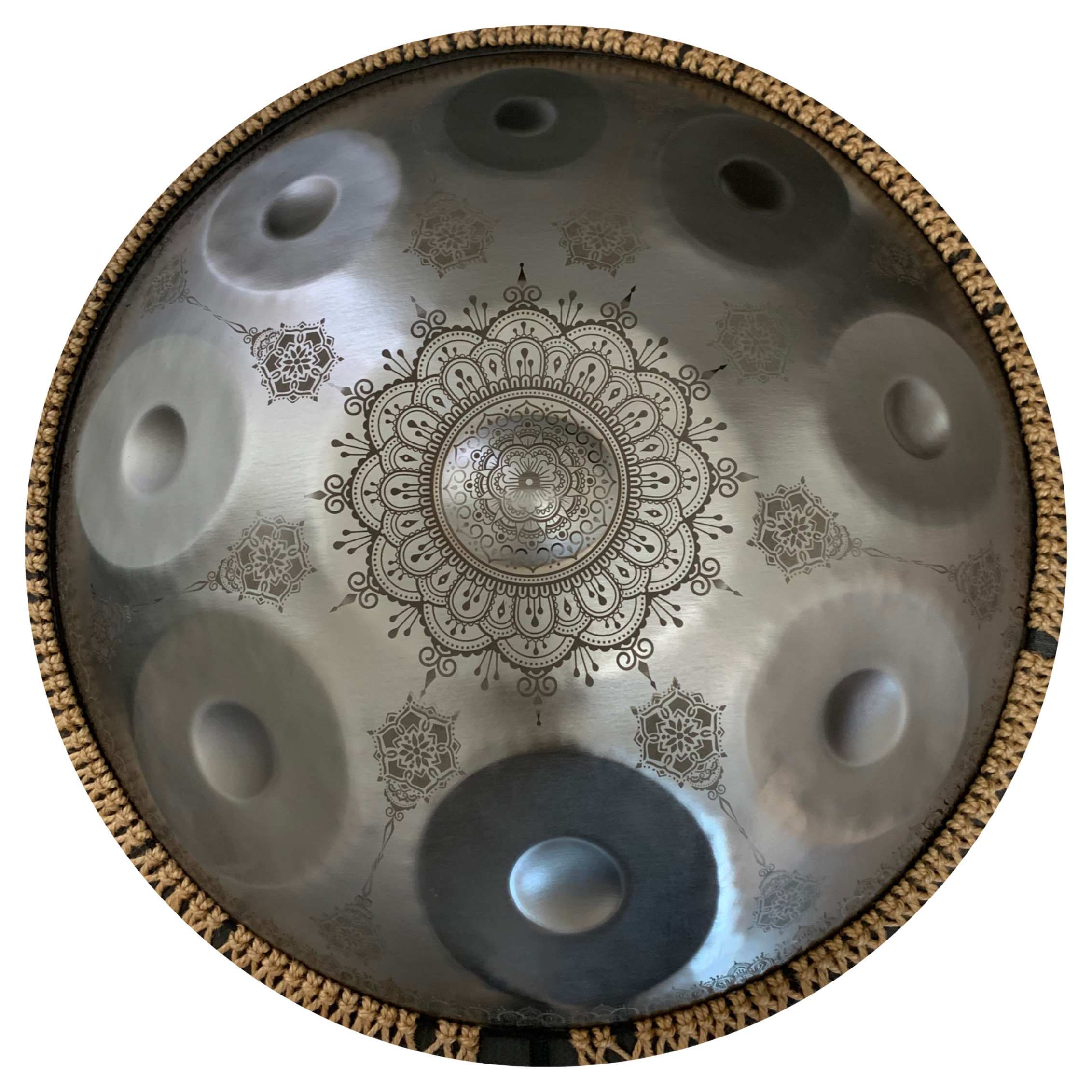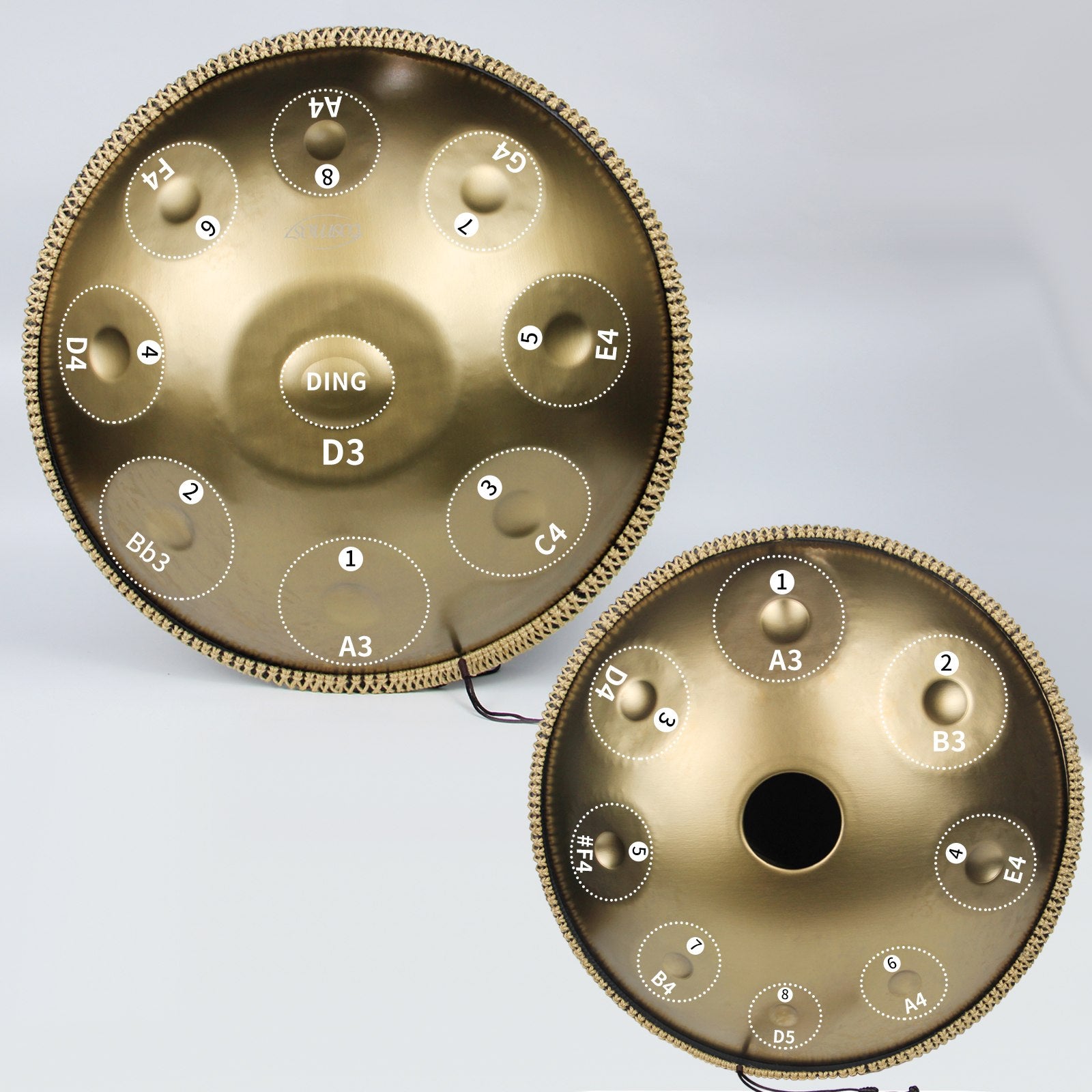Déverrouillez le plein potentiel de votre handpan avec des conseils d'experts sur la technique, le choix des gammes, l'entretien, et plus encore dans ce guide complet.

Le handpan est un instrument de percussion unique qui a gagné en popularité récemment en raison de son son inhabituel et de son adaptabilité. Les handpans sont originaires du Steel Pan de Trinidad. Initialement fabriqués par une seule entreprise en Suisse, il existe maintenant plus de 100 entreprises de handpan dans le monde.
Le handpan est souvent comparé à un tambour en acier, bien qu'il produise un son plus doux et mélodieux. Il se joue en frappant la surface en forme de dôme avec vos mains, ce qui produit un son riche et nuancé.
Dans cet article, nous allons examiner 10 conseils pour tirer le meilleur parti de votre tambour handpan et améliorer vos compétences en handpan. Ces conseils vous aideront à perfectionner votre technique, à élargir votre vocabulaire musical et à mieux comprendre le handpan.
1. Choisissez un Handpan de qualité
Avant d'acheter un handpan, effectuez des recherches appropriées. Visitez des festivals, demandez à des amis handpan, publiez un appel sur des forums pour des joueurs locaux, et/ou contactez des fabricants renommés pour planifier une visite. Un bon handpan, même pour les débutants, devrait être plus facile à jouer et à comprendre. Les sept principales caractéristiques d'un bon handpan sont :
- Accordage : La précision et la cohérence des notes sur le handpan.
- Timbre : La qualité tonale unique et la richesse de l'instrument.
- Soutenir : Combien de temps le son résonne après chaque coup.
- Équilibre : L'uniformité et la cohérence du son entre différentes notes.
- Pas de diaphonie : Interférence minimale ou résonance non intentionnelle entre les notes adjacentes.
- Plage Dynamique : La capacité du handpan à produire une large gamme de volumes et d'intensités.
- Précision Harmonique : La clarté et la pureté des harmoniques que l'instrument produit.
Prenez votre temps, profitez-en et examinez-le en tenant compte de tous les attributs.
2. Choisissez la bonne échelle de handpan
Lorsque vous commencez votre aventure avec le tambour handpan, choisir la bonne échelle est essentiel pour votre plaisir et votre expression créative. Commencez par explorer de nombreuses échelles de handpan sur des plateformes comme YouTube, où vous pouvez écouter plusieurs options et prendre des notes sur celles qui résonnent avec vous. Considérez les caractéristiques de chaque échelle : mineure, majeure, sérieuse, aiguë, douce ou entraînante, et leur capacité à soutenir vos objectifs musicaux, que ce soit pour improviser, écrire, se détendre ou améliorer votre configuration actuelle. Pour communiquer efficacement vos préférences aux fabricants de handpan, dressez une liste de vos échelles préférées contenant des caractéristiques particulières comme des noms et des notes musicales.
Il est essentiel de rechercher et de contacter les fabricants au sujet de la disponibilité des gammes, car tous les fabricants ne produisent pas chaque gamme. Soyez prêt à choisir parmi les possibilités disponibles ou à explorer d'autres fabricants spécialisés dans la gamme que vous avez choisie. Prenez le temps de prendre des décisions pour vous assurer qu'elles sont en accord avec vos objectifs et préférences musicales. En suivant ces étapes, vous pouvez choisir en toute confiance une gamme de handpan qui répond à vos besoins musicaux et qui est en forte connexion avec votre vision artistique et votre style.
3. Découvrez les vidéos
Pour affiner votre oreille à la musique du handpan, commencez par chercher "handpan" sur YouTube et écoutez diverses vidéos. Utilisez des écouteurs pour une meilleure clarté afin de percevoir les nuances telles que le ton, la résonance, l'accord, l'équilibre des notes et la dynamique. Prenez note des différences entre les instruments que vous entendez.
En vous concentrant sur l'écoute, vous identifierez des instruments qui résonnent avec vous. Regarder plus de vidéos vous entraînera à distinguer les sons de haute qualité de ceux ressemblant à des casseroles. N'oubliez pas que les vues et les likes peuvent parfois indiquer la qualité de l'instrument, mais les vidéos populaires peuvent également présenter des astuces comme des techniques de jeu inhabituelles.
4. Comprendre le Handpan
Avant de procéder aux techniques, vous devez d'abord acquérir une compréhension de base du handpan. Il s'agit d'un tambour en acier convexe avec de nombreux champs de tonalité et une note centrale semblable à un ding. L'instrument se joue en touchant les différentes sections de tonalité avec vos paumes et vos doigts. Chaque champ de tonalité produit un son cohérent et musical avec sa propre hauteur caractéristique. Familiarisez-vous avec le design et les tonalités du handpan pour établir un lien plus fort avec lui.
5. Maîtriser les motifs rythmiques
Chaque composition musicale est basée sur le rythme, et le handpan ne fait pas exception. Commencez par pratiquer des rythmes de base à quatre et six temps ainsi que des motifs rythmiques simples supplémentaires. Un métronome peut vous aider à améliorer votre sens du temps et votre précision. Au fur et à mesure, mettez-vous au défi avec des motifs plus difficiles, des syncopes et des polyrhythmes. Essayez de varier les tempos et les accents dans vos compositions de handpan pour ajouter de la profondeur et de la complexité.
6. Explorez la diversité mélodique sur le handpan
Bien que le rythme soit vital, le handpan offre également diverses options mélodiques. Expérimentez avec différentes gammes et modes pour créer des mélodies intrigantes. Commencez par apprendre la gamme pentatonique, souvent utilisée dans la musique de handpan. Au fur et à mesure que vous gagnez en confiance, essayez des gammes plus exotiques telles que la dorienne, la phrygienne et la mixolydienne. Combinez des séquences mélodiques et des motifs rythmiques pour produire des phrases musicales complexes et expressives.
7. La propreté est la clé
Tous les musiciens de scène qui prennent soin de leurs instruments les nettoient avec un chiffon avant de les ranger. L'acier est un matériau poreux qui absorbe tout ce qui se trouve dessus. Les doigts et les mains sont souvent gras à cause des huiles corporelles, sales, et ont la fâcheuse habitude de laisser des cellules mortes derrière eux. La saleté s'est accumulée sur votre handpan, ce qui n'est pas idéal. Il est toujours préférable de garder un chiffon en microfibre dans le sac pour nettoyer la surface après chaque session de jeu. Prenez l'habitude et la discipline de le faire.
8. Jouer dans des endroits humides
Jouer de votre handpan sur la plage pendant les heures magiques du lever ou du coucher du soleil peut être incroyablement inspirant. Le son apaisant des vagues et la chaleur d'une brise estivale créent un cadre idéal pour la créativité musicale. Cependant, il y a des considérations importantes à garder à l'esprit.
L'humidité élevée et l'exposition au sel près de la mer peuvent nuire à votre handpan. Le sel, notoire pour provoquer la corrosion, peut endommager l'instrument au fil du temps s'il n'est pas correctement géré. Après avoir joué, il est crucial d'essuyer votre handpan pour enlever toute humidité et de le protéger de l'air salin en le gardant soigneusement rangé dans son étui.
De plus, jouer sur la plage attire souvent l'attention des passants, qui sont curieux du son unique du handpan. Bien que participer à des conversations puisse être agréable, il est essentiel de ne jamais laisser votre instrument sans surveillance, surtout pendant des moments vulnérables comme le crépuscule ou le début de la matinée. Ranger votre handpan dans son étui lorsqu'il n'est pas utilisé garantit sa sécurité et sa longévité, vous permettant de profiter de vos sessions musicales au bord de la plage sans souci.
9. Placement et posture des mains appropriés
Vous devez développer un placement des mains et une posture appropriés pour jouer du handpan efficacement. Le handpan se joue avec les mains, et une technique appropriée est nécessaire pour produire un son clair et constant. Les mains doivent être positionnées sur l'instrument dans une position détendue et naturelle, avec les doigts courbés et les paumes tournées vers le bas. La posture doit être droite et détendue, avec les épaules, les bras et le dos droits. Un placement des mains et une posture appropriés vous permettent de jouer du handpan plus confortablement et efficacement.
10. Pratiquez régulièrement
Enfin, la pratique régulière est essentielle pour apprendre le handpan car elle améliore la technique, le tempo et la musicalité globale. En pratiquant continuellement, vous acquerrez une compréhension plus profonde de l'instrument et de ses possibilités, vous permettant d'expérimenter de nouvelles approches et styles. De plus, une pratique fréquente favorise la mémoire musculaire, rendant le jeu de motifs et de rythmes complexes plus simple.
Conclusion
Pour exceller à jouer du handpan, vous devez avoir la patience, la dévotion et la curiosité nécessaires pour découvrir les caractéristiques distinctes de l'instrument. Maîtriser le placement des mains, le rythme, la mélodie et la dynamique est crucial pour développer un style personnel et créer une musique captivante. N'oubliez pas de pratiquer souvent, d'essayer de nouvelles méthodes et de vous inspirer des joueurs de handpan talentueux. Avec le temps et le travail, vous réaliserez tout le potentiel de ce merveilleux instrument et captiverez les auditoires avec votre musique de handpan.

